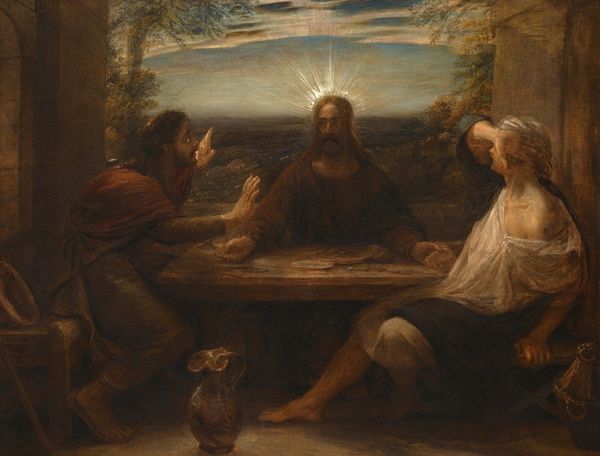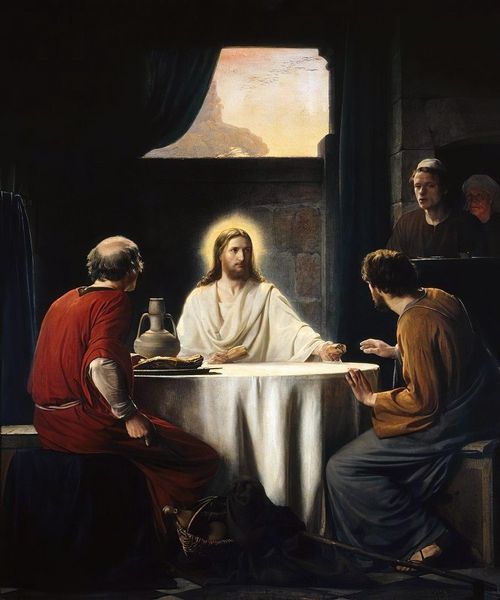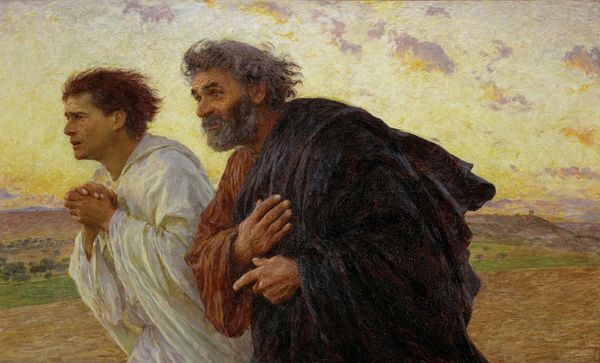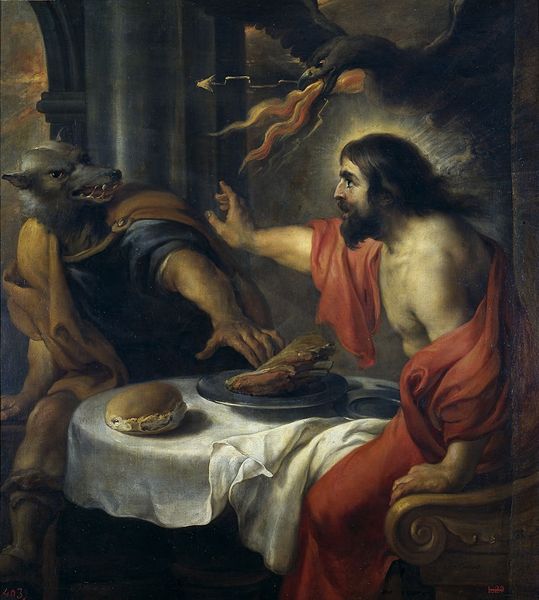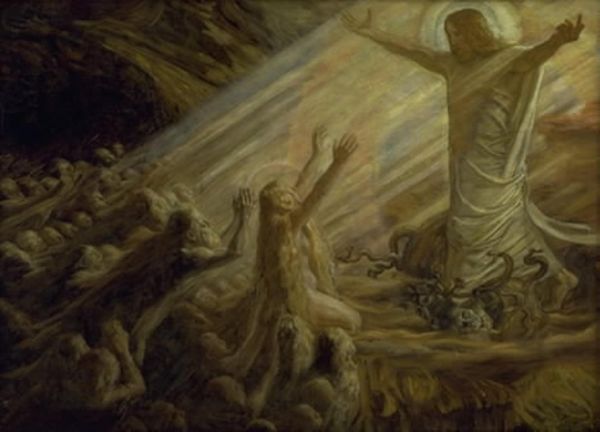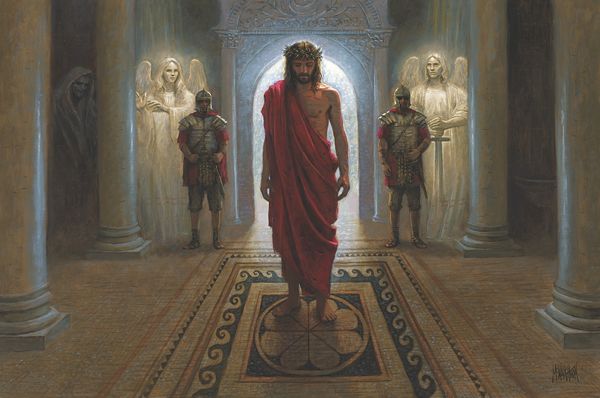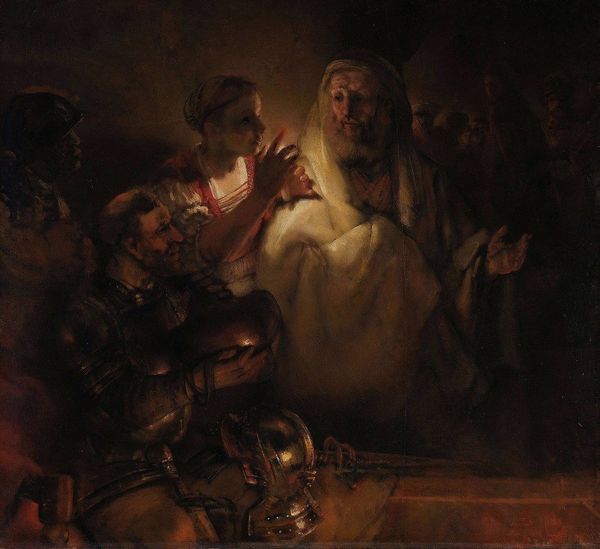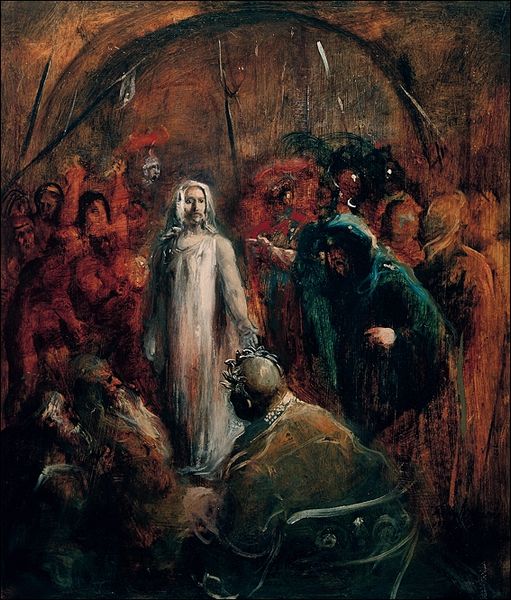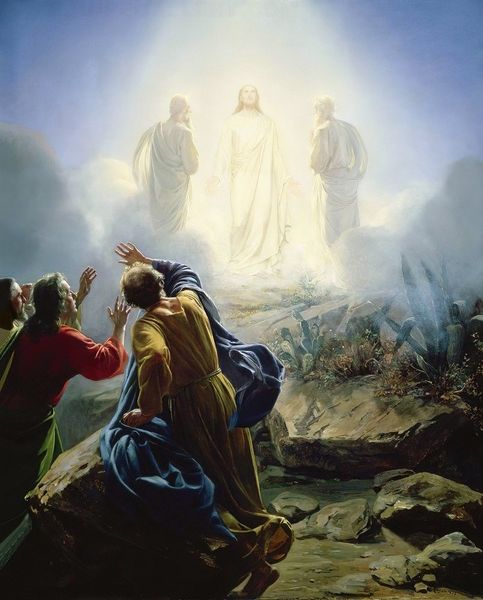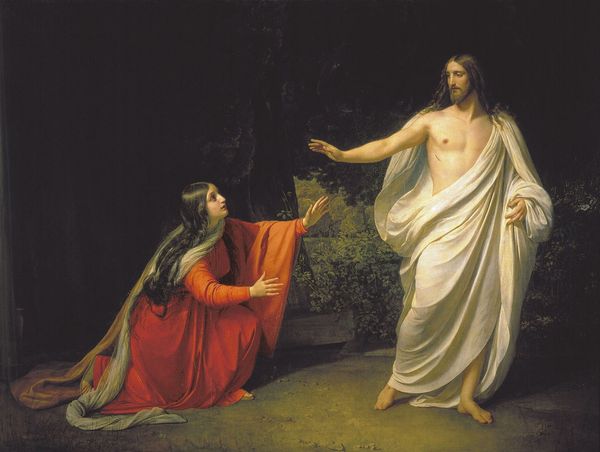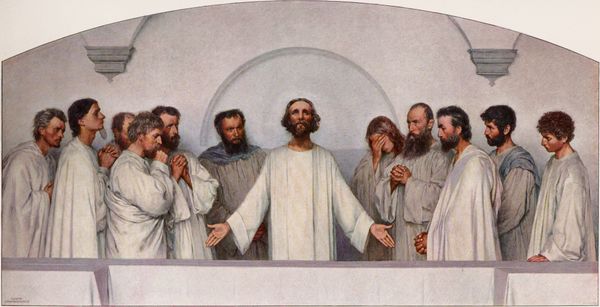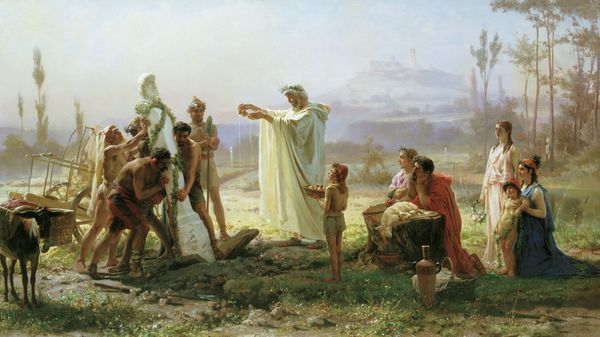
painting, oil-paint
#
portrait
#
narrative-art
#
painting
#
oil-paint
#
intimism
#
classicism
#
symbolism
#
genre-painting
#
history-painting
#
academic-art
#
realism
Copyright: Public Domain: Artvee
Pascal-Adolphe-Jean Dagnan-Bouveret painted "Christ and the Pilgrims at Emmaus," sometime in the late 19th or early 20th century. This work depicts the biblical scene where the resurrected Christ reveals himself to his followers in the town of Emmaus. Painted in France, a country with a long and complex relationship to the Catholic Church, the artwork reflects a period of intense social and political change. The Third Republic was marked by debates around secularism and the role of religion in public life. Dagnan-Bouveret trained in the academic system, yet he chose to paint this religious scene with a striking realism, influenced by the growing interest in representing everyday life. By situating Christ in a contemporary setting, with ordinary people as his disciples, the artist challenged traditional artistic conventions. Was the artist critiquing the church? Was he questioning the social order? To better understand Dagnan-Bouveret's motivations, one might explore the archives of art institutions, religious organizations, and political movements of the time. It is through this process of historical inquiry that the artwork's deeper meanings and its relationship to the society in which it was created can be revealed.
Comments
No comments
Be the first to comment and join the conversation on the ultimate creative platform.
